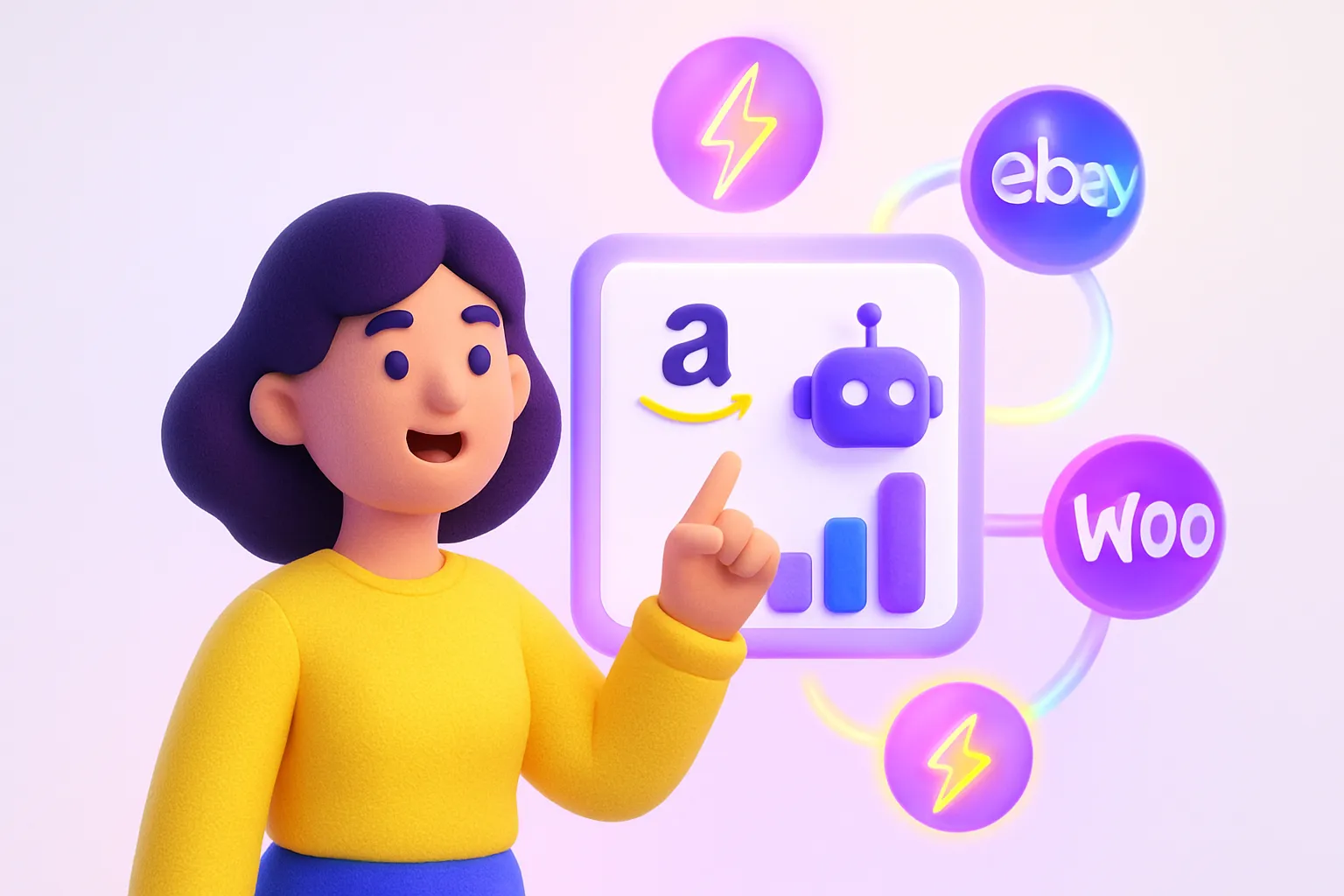AI-Powered Strategies for Amazon Sellers to Expand Beyond Amazon

Why Staying Amazon-Only Limits Your Growth
Amazon is a great launchpad, but it also traps you in rising ad costs, fee changes, and algorithm shifts you cannot control. Diversifying into channels like Shopify, Walmart, eBay, and social commerce spreads risk and lets you own more of the customer journey. The snag? Each marketplace wants different image sizes, attribute fields, and tone of voice. That is where AI levels the playing field for lean teams.
AI Tools That Make Multichannel Expansion Manageable
Before you spend months tweaking CSV files, consider purpose-built platforms that automate the grunt work:
- Ecomtent converts a single product feed into channel-specific formats and even generates new images and copy in seconds.
- Shopify’s AI Store Builder creates a fully populated storefront from a few keywords, so you can test a direct-to-consumer site without hiring a dev team.
- conbase.ai lets you upload a CSV from Seller Central, run custom prompts, and push out hundreds of optimized titles, bullets, and meta descriptions tailored to each new marketplace.
Start with one tool that solves your biggest bottleneck, document the workflow, then layer in others as you scale.
Optimizing Listings Across Multiple Platforms
Copy that wins the Amazon Buy Box will not necessarily rank on Walmart or convert on your Shopify site. AI can localize and tweak your listings in minutes.
- Channel-specific keyword research – Feed marketplace search data into GPT-powered prompts to surface phrases unique to each platform.
- Dynamic copy generation – Tools such as Ecomtent and conbase.ai write variations that respect character limits, content policies, and tone guidelines.
- Visual adaptation – AI image editors resize, remove backgrounds, and add lifestyle overlays to meet marketplace requirements without a designer.
The result is a unified brand voice that still feels native to every channel.
AI-Driven Inventory Management
Nothing kills momentum like stocking out on one platform while overstocking on another. Cloud systems such as Cin7 analyze historical sales, seasonality, and promotions to forecast demand across all channels. Automated purchase orders help you:
- Avoid storage fees on Amazon FBA
- Keep enough safety stock for flash sales on Shopify
- Route inventory to 3PLs closest to high-volume regions
Even a small improvement in forecast accuracy can unlock thousands in cash flow.
Automating Customer Service Everywhere Shoppers Reach You
Answering the same “Where is my order?” question on five platforms quickly drains resources. Tidio plugs into email, live chat, Facebook Messenger, Instagram, and WhatsApp. Its AI chatbot, Lyro, resolves up to 70 percent of routine tickets with natural language responses. Key benefits:
- 24/7 support without hiring a global team
- Consistent brand tone across channels
- Escalation rules for complex issues so human agents stay focused
Combine chat transcripts with your product feedback loop to refine listings and reduce returns.
Real-World Wins: Multichannel Expansion in Action
Private-Label Home Goods Brand
After maxing out Amazon growth, the team launched a Shopify store built by the AI Store Builder in two days. They used conbase.ai to bulk rewrite 300 product descriptions for SEO and voice consistency. First-month DTC sales covered the annual Shopify fee.
Outdoor Gear Seller
A single feed pushed through Ecomtent generated platform-ready listings for Walmart and eBay. Cin7 synchronized inventory so flash sales did not cannibalize Amazon stock. The brand now sees 28 percent of revenue off Amazon.
Agency Working With Ten Brands
The agency integrated Tidio across every storefront to handle pre-purchase questions and returns. Response times fell below two minutes, earning higher marketplace seller ratings and repeat customers.
Addressing the Challenges of AI Adoption
AI is not plug-and-play magic. Integration headaches, data privacy, and ongoing model monitoring often trip up sellers. Before signing a contract, map out:
- Data flow – How will SKUs move from Seller Central, through your AI stack, to each channel?
- Security – Confirm encryption standards and choose vendors that comply with GDPR and CCPA.
- Ownership – Keep a human in the loop for final content approval and periodic audits.
Planning upfront prevents fire drills when a marketplace updates its API or policy.
Dig Deeper: More AI Tips for Amazon Sellers
If you want a longer list of recommended tools and a step-by-step framework, our guide Expanding Beyond Amazon: AI Strategies for Multichannel E-Commerce Success walks through data cleaning, SOP creation, and scaling processes as your team grows.



